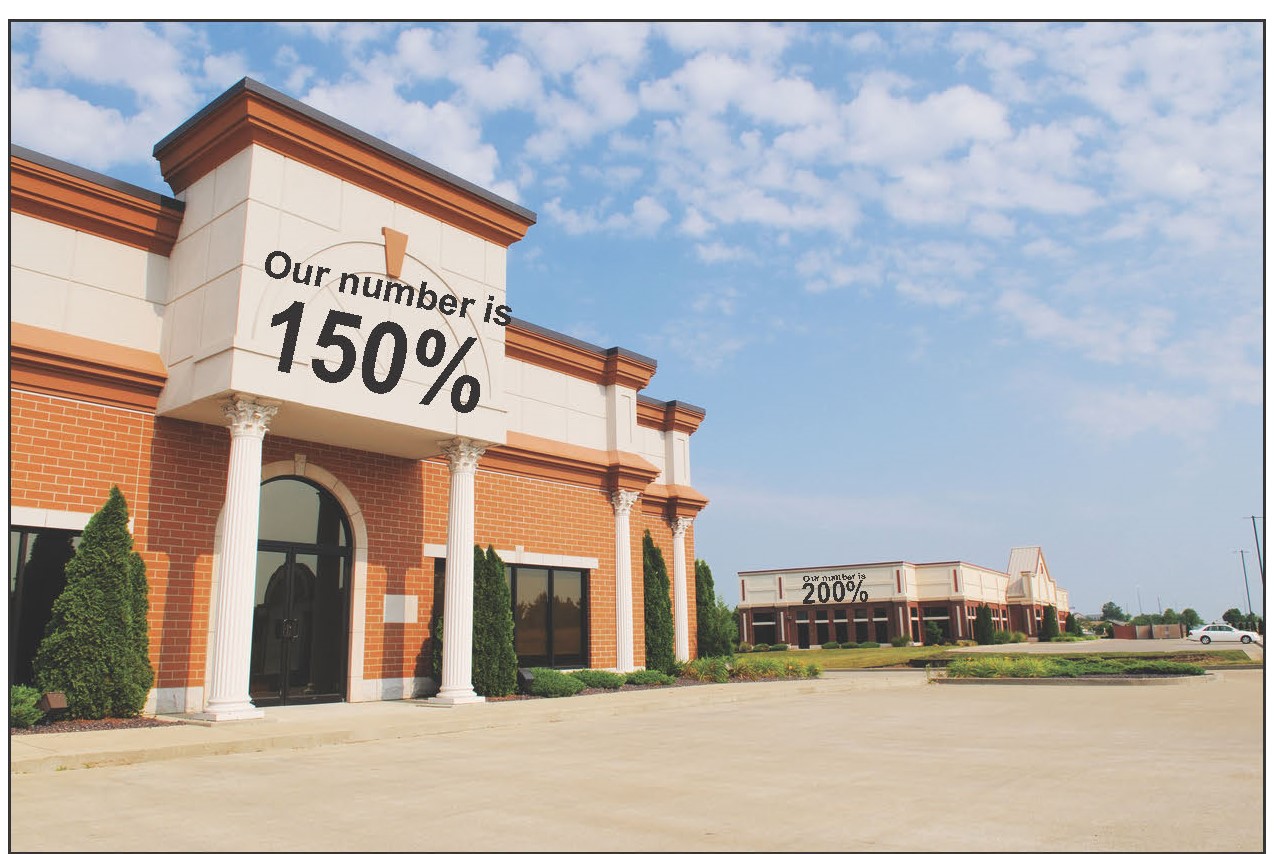
23 Mar What’s your number?
By Grant Dattilo
Imagine that your car pulls up to an intersection and the light is red. As you wait for the green light you notice there is a primary care medical clinic on each of the four corners and you are new in town. You need to find a primary care physician for your family.
Then you notice that on the front and side of each clinic there’s a large sign saying: “Our number is 150%”. Curious, you look at the other three, each with a similar sign facing the streets. “Our number is 160%” – “Our number is 175%” – “Our number is 200%”. This is called a Medicare-Percent.
Could this, or some form of it, be the future of price shopping for medical care?
These four numbers represent the percent of Medicare each clinic accepts as payment in full for providing medical care services. With this single number, you would be able to know which clinic has the most affordable price, and it could help you choose your new doctor.
What does the number mean?
Medicare is the massive government health plan that pays for the medical care of 47.7 million elder Americans 65 or older plus 13.8 million others who qualify for various reasons – 61.5 million enrollees.[i] The Centers for Medicare and Medicaid (CMS) administers the program and, using third-party payors, pays Medicare claims to participating providers.
A Medicare provider payment equals 100 percent of Medicare’s allowable amount in each geographical location (there are other adjustments based on the type of provider program). But commercial insurance pays far more than the Medicare allowable amount. In today’s world of health care finance, commercial insurance pays providers from 110 percent of Medicare to 350 percent, or more. Some specialists, such as anesthesiologists, receive 1,000 percent of Medicare or more as payment in full.
Today, you don’t know how much providers receive until weeks after your event, when you receive an Explanation of Benefits (EOB). Obviously, getting the price long after the service is rendered provides no help when you want to shop for medical care services. That is why there is a crying need for a better way to price medical care, a totally transparent way to communicate how much a provider will accept as full payment.
Now comes this new idea – the full disclosure of a provider’s Medicare-Percent – defined as the percent of Medicare a provider will accept as full payment. With this single number disclosed, at a glance the medical care consumer will be able to price shop between providers.
In Minnesota, there is a bill moving through the State Senate – SF 2110 – to require providers to disclose their Medicare-Percent. This is a good idea. Not only does it allow consumers to price shop, it allows doctors and hospitals to know the percent of Medicare their competitors are charging. This bill needs to be replicated across the United States.
As you sit at that stoplight, noticing the four different “numbers” posted on their buildings, it makes you think of gas stations posting their price per gallon. Usually, four stations on the same corner charge the same, and they are all price sensitive – if one drops their price one penny, so do the others. This is because in almost all circumstances, complete price transparency among competitors results in a reduction in prices over time.
So you see the “number” on each clinic’s building. You know your cost would range from 150-200 percent of Medicare. Why not choose the least expensive for your family? Why choose the most expensive?
With their prices fully disclosed, each clinic would have to prove their value. Value in medical care pricing is a combination of factors. The quality of care is a major factor. If the provider at 150% of Medicare graduated last in his or her class just a year ago, and they are receiving 2-star ratings from patients, you may want to spend more with a different doctor. If the provider at 200% of Medicare has 30 years experience, a 5-star rating from patients, and is especially proficient with people of your age and sex, you might choose to pay the higher rate.
This is not unlike buying a car. You could choose between a Toyota Corolla, with a starting price of $20,500, or a fully-loaded Lexus LS at $77,025. You could choose something in-between. The fact is, you would know the price, understand the features, and be able to evaluate the quality – all to see which better fits your needs, wants and desires.
For the 80 percent of medical and hospital care that is shoppable, you should be able to start with the price of care, communicated in a simple way – one single number. The Medicare-Percent is that number.
Efforts to require providers to disclose their Medicare-Percent – the percent of Medicare they will accept as payment in full – should move forward. Then let the marketplace sort out the prices medical providers will charge in order to attract health care consumers.
Click here for more information about the Medicare-Percent – to learn about the “What’s your number?” idea.
[i] Staff. (2021) MDCR Enroll AB4: Total Medicare Enrollment: Part A and/or Part B Enrollees, by Age Group, Calendar Years 2014-2019. CMA Program Statistics. https://www.cms.gov/files/document/2019cpsmdcrenrollab4.pdf

